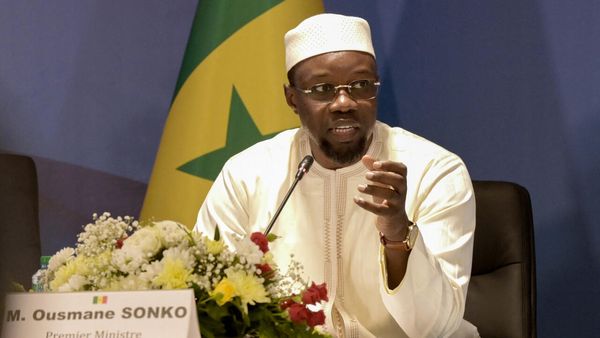The recent news of wild poliovirus type 1 (WPV1) in Malawi imported from Pakistan and of polio outbreak in Israel caused by ‘circulating vaccine-derived poliovirus type 3’ (cVDPV3) are visible signs of floundering polio eradication. When a virus in oral polio vaccine (OPV) de-attenuates by mutations, acquiring transmission efficiency and neuro-virulence, it is called cVDPV.
The eradication target, when launched in 1988, was 2000, as “a gift of the twentieth century to the twenty-first”. The World Health Organization assumed the task, assigned by unanimous resolution in the World Health Assembly (WHA), the forum of Ministers of Health of all nations.
The resolution was perfectly timed: Rotary International launched its ‘PolioPlus’ project in 1985, to provide polio vaccines to under-five children of all developing countries before 2005. Of the six WHO regions, three — Americas, Europe and Western Pacific — had already independently resolved to eradicate polio in their territories by or before 2000. Incidentally, they achieved the goal more or less on time. WHO’s task was essentially confined to the “Southern Arc” of the remaining regions — Africa, Eastern Mediterranean and South East Asia. Having failed the target of 2000, WHO revised it every 4-5 years; now it is 2026, as in the strategy document.
WHO’s budget estimate
There are disturbing aspects of this extraordinarily slow pace. The WHO’s original budget estimate for eradication was about $5 million, but since 2000, the annual spending is about $1 billion, raised through Rotary, Gates Foundation and rich country governments. A billion dollars is not an insignificant portion of WHO’s annual budget. Countries in the three Southern Arc regions continue the eradication drill, like the curse of Sisyphus. India conducts one annual national and two sub-national pulse immunisation campaigns with bivalent (type 1 and 3) OPV (bOPV) for all children below five years, in addition to routine immunisation with five doses — totalling 10 to 15 doses per child in different States.
Every paediatric textbook warns that on rare occasions, OPV itself may cause vaccine-associated paralytic polio (VAPP) in vaccinated children (vaccinated VAPP) and unvaccinated child-contacts (contact VAPP). The commonest cause of vaccinated VAPP is type 3 vaccine virus and for contact VAPP, it is type 2.
These safety problems were known since 1964. For avoiding VAPP, rich countries immunise children with the inactivated polio virus vaccine (IPV), which is completely safe.
Should economics or ethics guide our choice between IPV and OPV? The low cost of OPV could be fallacious: will overall programme-cost be less for 10-15 doses of OPV, including campaigns, than IPV given through Universal Immunisation Programme (UIP)? We know of no such analysis.
Benefit-risk balance
Ethics is uncompromising. With SARS-CoV-2 vaccines, benefit-risk balance became widely understood. Against high risk of deaths due to COVID-19, vaccines with rare safety problems, including death, scored well on benefit-risk analysis. When the risk of WPV polio was annually two per 1000 pre-school children, and the risk of VAPP in one per 1,50,000 birth cohorts, the benefit was favourable for OPV. When the risk of death or paralysis falls low, the benefit-risk ratio reverses — as for COVID-19, so also for polio.
After WPV-2 was eradicated in 1999, the benefit of type 2 vaccine virus became defunct. The ethical problem of risk without benefit was neglected until cVDPV2 caused several outbreaks, beginning in 2006, forcing the tOPV (trivalent oral polio vaccine) to bOPV switch in 2016. WHO experts recommended one dose of IPV at 14 weeks of age to mitigate further risks of cVDPV2 outbreaks. But that was too little too late, as more countries continue with cVDPV2 outbreaks than have WPV type 1.
After wild virus type 3 was globally eradicated in 2012, vaccine virus type 3 had to be removed for avoiding VAPP. No agency has any right to cause VAPP in the name of eradication, especially after WPV-3 has been eradicated. This ethical dilemma remained invisible as VAPP is classified non-polio AFP. In Israel, cVDPV3 emerged and caused the outbreak. Only seven children were paralysed, all unvaccinated. The risk of paralysis with WPV-3 is one in 1,000 infected children — so at least 7,000 unvaccinated children were infected. Israel’s population is less than 10 million, but ours is 1,400 million.
The probability of cVDPV3 outbreak is low in India, but on account of our population size of 1,400 million, its impact is likely to be enormous. India must withdraw type 3 and continue monovalent type 1 OPV, which also must be withdrawn after reaching 85-90% coverage with IPV, three doses per child.
(T Jacob John is Past President of Indian Academy of Paediatrics and a Founder-Member of Rotary International’s PolioPlus Committee. Dhanya Dharmapalan is Pediatric Infectious Disease Specialist)







